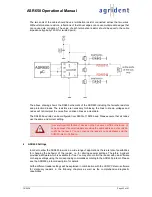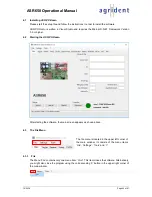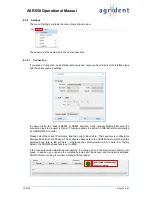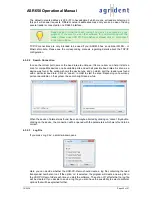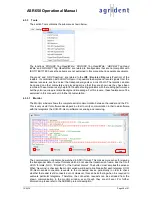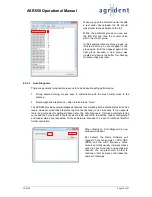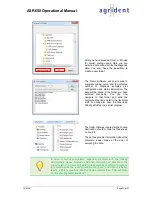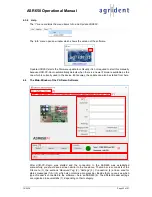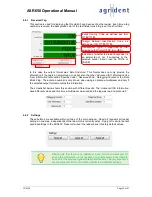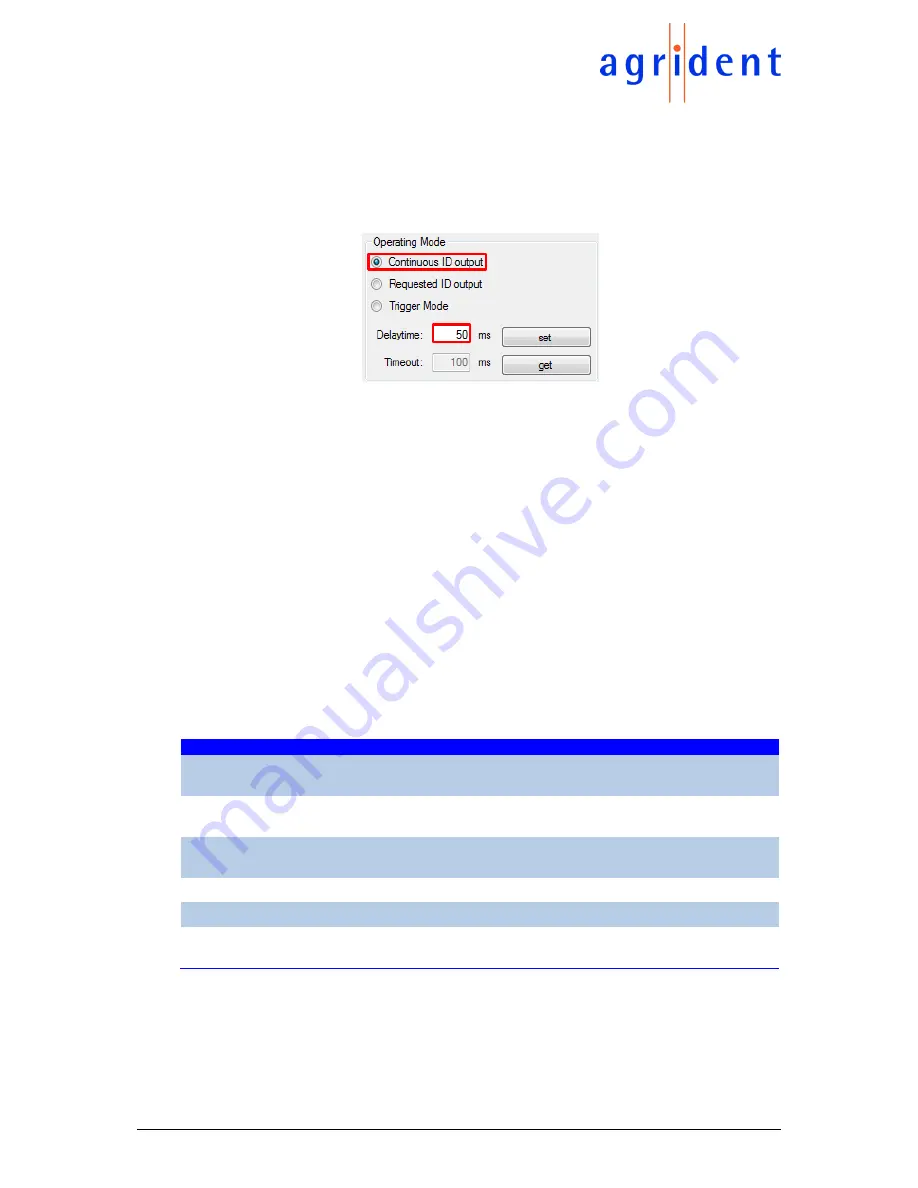
19/09/18
Page 37 of 67
ASR650 Operational Manual
4.6.3
Operating Modes
The ASR650 has three different operating modes. They allow to adapt the behaviour of the reader
to several applications and have to do with field activation and different ways of the ID
transmission to the interface in general.
1. Continuous ID output
The reader has its RF-field activated all the time. As soon as a transponder was read, the ASR650
will send the EID to the interface. The interface can be RS232, RS485 or Bluetooth or WLAN or
Ethernet in case of using the corresponding add-on module. The repeated transmission of one
and the same ID can be controlled via the setting
‘
Delaytime
’. The parameter ‘
Timeout
’ is greyed
out here because it is only important for the ‘
Trigger Mode
’.
Please note that the
‘
Continuous ID output
’ mode must not be used in case of having more than
one reader connected via RS485 since RS485 does not support anti-collision. For such
applications you either have to use
‘
Requested ID output
’ or ‘
Trigger Mode
’. The ‘
Continuous ID
output
’ mode is intended to be used for point-to-point connections only. This does not apply if you
are using the Ethernet or WLAN option since these interfaces do support anti-collision.
The
‘
Continuous ID output
’ mode was called ‘
Master Mode
’ for the previous reader generations.
The
‘
Delaytime
’ is the period the reader waits before sending one and the same ID repeatedly. If
the ASR decodes a different ID, the
‘
Delaytime
’ does not matter. The ‘
Delaytime
’ is configurable
in milliseconds.
Value Hex
Value Decimal
Description
00
0
Maximum Delaytime; one and the same ID will not be
transmitted again until another transponder was read.
01
50ms
Default value; the same ID will be transmitted again after
50ms, if the transponder was read again.
02
100ms
The same ID will be transmitted again after 100ms, if the
transponder was read again.
…
…
Values in 50ms steps are possible
FE
12700ms
Largest possible numeric value
FF
12750ms
No Delaytime. The ID will be transmitted repeated directly
after reading.

